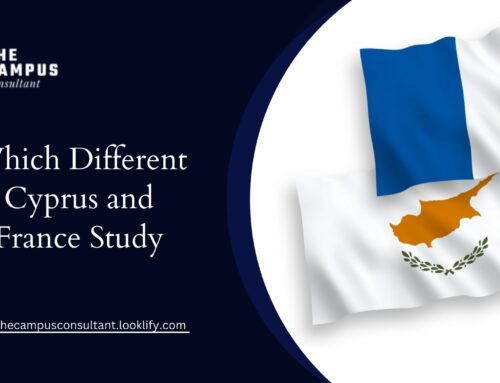Introduction
Embarking on a journey to pursue education in Italy is a thrilling prospect, but it comes with the inevitable consideration of living costs. As international students, it’s crucial to have a comprehensive understanding of the expenses associated with studying and residing in this beautiful European country. In this detailed guide, we’ll delve into every aspect of the living costs in Italy, providing you with valuable insights that go beyond the surface. Italy, with its rich cultural heritage, exquisite cuisine, and world-renowned educational institutions, has become a hotspot for international students seeking a unique academic and cultural experience.
Renting Apartments in Italian Cities
One of the major components of living costs for international students is accommodation. Italy offers a diverse range of housing options, from shared apartments to private studios. In popular cities like Rome, Milan, and Florence, expect higher rental prices. On average, a one-bedroom apartment in the city center can cost around €800 to €1,200 per month, while suburban areas may offer more affordable alternatives. Embarking on your academic journey in Italy comes with the exciting task of finding a suitable place to call home. The process of renting an apartment in Italian cities can be both thrilling and challenging. In this detailed guide, we’ll unravel the intricacies of navigating the rental landscape, ensuring you make informed decisions for a comfortable and enjoyable stay.
University Accommodation and Budget-Friendly Tips
Some universities provide on-campus accommodation, which can be a cost-effective choice. These residences often come with shared facilities, fostering a sense of community among students. Additionally, savvy budgeting tips, such as exploring less touristy neighborhoods or opting for shared living arrangements, can significantly lower your monthly housing expenses. Embarking on your academic journey in Italy brings with it the exciting prospect of exploring a new culture and immersing yourself in a rich educational experience. One critical aspect of this adventure is securing suitable accommodation without breaking the bank.
Grocery Shopping and Dining Out
Understanding the nuances of grocery prices and dining out is essential for managing daily expenses. Local markets, or “mercato,” are excellent places to procure fresh produce at reasonable prices. Cooking at home is not only a healthier option but also a wallet-friendly approach. On the other hand, indulging in occasional dining out experiences allows you to savor the rich Italian cuisine without breaking the bank. Italy is a haven for fresh, locally sourced produce. Explore the bustling local markets, such as Mercato di San Lorenzo in Florence or Mercato di Testaccio in Rome, where you can find an array of fruits, vegetables, and artisanal products. This not only provides a cultural experience but also allows you to shop economically, with monthly grocery bills ranging from $150 to $250.
Transportation Costs
Italy boasts an efficient public transportation system, which can be a cost-effective means of getting around. Monthly transportation passes in major cities typically range from €30 to €50, offering unlimited access to buses and metros. Exploring cities on foot or by bicycle is not only economical but also provides a chance to immerse yourself in the local culture. Italy boasts an extensive and efficient public transportation system, making it convenient for international students to explore their surroundings. City buses and trams are affordable options, with monthly passes ranging from $30 to $50 depending on the city.
Tuition Fees and Scholarships
Tuition fees for international students vary depending on the chosen course and university. On average, tuition can range from €900 to €4,000 per year. Exploring scholarship opportunities is highly recommended, as many universities and organizations offer financial aid to deserving students. Scholarships not only alleviate financial burden but also enhance your overall academic experience. Private universities, while often pricier than public counterparts, provide a unique educational experience. Tuition at private institutions can range from $6,000 to $20,000 annually. It’s essential to consider factors such as program quality, faculty expertise, and additional amenities when evaluating the value of private education.
Mandatory Health Insurance
Health insurance is mandatory for all international students in Italy. The cost varies but typically ranges from €150 to €200 per year. This ensures access to quality healthcare services, giving you peace of mind during your stay. Additionally, factoring in expenses for books, study materials, and a mobile phone plan will contribute to a more accurate estimation of your overall living costs. Italy mandates that all residents, including international students, have comprehensive health insurance coverage. This requirement is in place to guarantee access to quality healthcare services and to safeguard individuals from unexpected medical expenses.
Balancing Work and Studies
Many international students explore part-time employment opportunities to offset living expenses. Italy allows students to work up to 20 hours per week during the academic year and full-time during scheduled breaks. Seeking part-time positions within your field of study not only provides financial support but also enhances your professional skills and network. Working while studying provides a valuable opportunity to attain financial independence. Earnings from part-time employment can contribute to covering living expenses, allowing you to manage your budget effectively.
Summary
Navigating the living costs in Italy as an international student requires meticulous planning and awareness of various factors. Living Costs in Italy for International Students From accommodation and daily expenses to education-related costs, this guide has provided a detailed overview to empower you in making informed decisions Living Costs in Italy for International Students.







[…] to the maritime majesty of Genoa, each city offers a distinctive experience that adds depth to your Italian […]